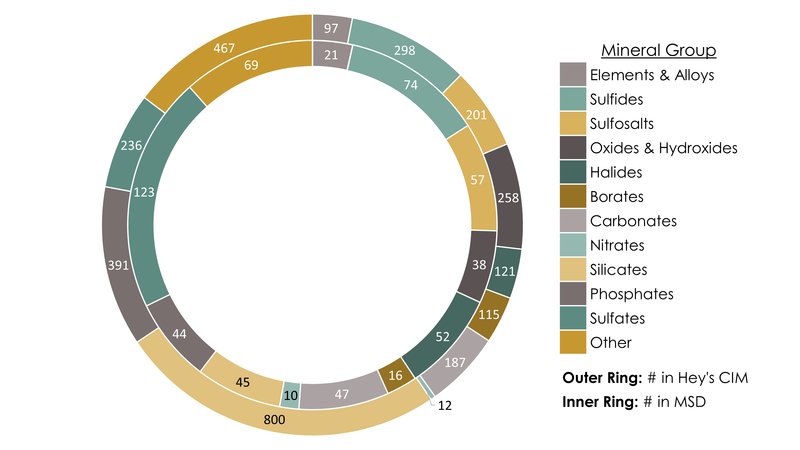It aims to be a comprehensive reference for museum professionals—and a starting point for further research—when assessing the conditions required by their mineral collections and objects. It consolidates current relevant research from various fields into one freely accessible location. By being a repository of interdisciplinary research, the database:
- encourages informed decision making,
- increases awareness of which disciplines and institutions are performing relevant research,
- exposes additional research applications and opportunities, and
- advocates cross-disciplinary research and communication.
It is anticipated that the Database will continue to grow by the addition of new scientific information from various publications. Several journals are consulted regularly for articles relevant to mineral stability. These articles are then reviewed for applicable data, which is then inserted into the database.
While the data presented in the MSD is replicated in good faith from trusted sources, we recommend returning to the source publication and confirming parameters with the corresponding author.
Facts & Figures
As of June 2021, the MSD contains 987 entries for 596 mineral species, which represented 17% of total species listed in the 3rd edition of Hey’s Chemical Index of Minerals (CIM), and 10% of total identified species.

A graphical representation of the distribution of minerals across major mineral groups. The outer ring displays the number of those included in the 3rd edition of Hey’s Chemical Index of Minerals (CIM), while the inner ring shows the number of those included in the Mineral Susceptibility Database (MSD). By comparing the two rings, one can see that certain mineral groups are better represented in the MSD than others.
Royce et al. 2021 - https://doi.org/10.1080/00393630.2021.2015947
Additionally, the MSD includes 4 ‘precious’ non-minerals (amber, pearl, obsidian, and coral), 18 minerals which are not Hey indexed (these are species which have been identified since the publication of Hey’s CIM, 3rd ed. in 1993) and 5 discredited mineral species, as examples of the latter may still be present and catalogued in museum collections under their old, now discredited name.
67% of the total database entries are water-related, with the next largest susceptibility group being light at 14%. Water-related entries include minerals which are hygroscopic, water soluble, and susceptible to humidity changes (e.g., hydration, deliquescence). The three predominant responses within the MSD entries are dehydration (17%), water-solubility (14%), and oxidation (exclusive of photo-oxidation: 14%; inclusive of photo-oxidation: 21%).
Do you have any relevant research?
In the box below, please provide:
- the mineral name
- reaction parameters
- reaction type
- how the apperance changes
- what it alters to
- link to your publication(s) (if available)
Examples:
- borax
- 20C, < 50% RH
- dehydration
- opaque white efflorescence
- to tincaloconite
- realgar
- light: 500-670nm
- structural alteration
- colour change: red to orange
- to pararealgar